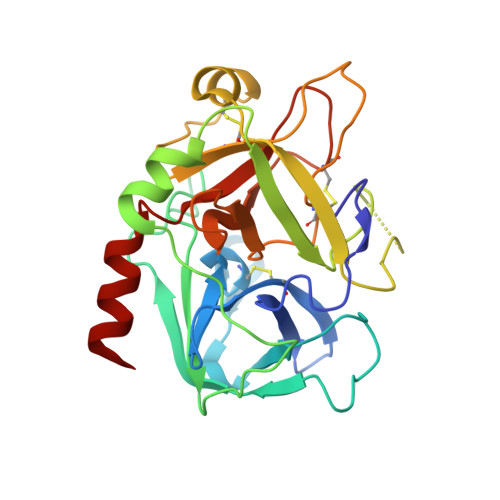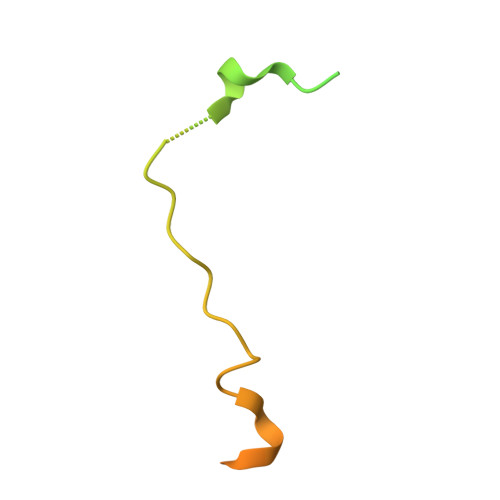Functional analyses yield detailed insight into the mechanism of thrombin inhibition by the antihemostatic salivary protein cE5 from Anopheles gambiae.
Pirone, L., Ripoll-Rozada, J., Leone, M., Ronca, R., Lombardo, F., Fiorentino, G., Andersen, J.F., Pereira, P.J.B., Arca, B., Pedone, E.(2017) J Biological Chem 292: 12632-12642
- PubMed: 28592490
- DOI: https://doi.org/10.1074/jbc.M117.788042
- Primary Citation of Related Structures:
5NHU - PubMed Abstract:
Saliva of blood-feeding arthropods carries several antihemostatic compounds whose physiological role is to facilitate successful acquisition of blood. The identification of novel natural anticoagulants and the understanding of their mechanism of action may offer opportunities for designing new antithrombotics disrupting blood clotting. We report here an in-depth structural and functional analysis of the anophelin family member cE5, a salivary protein from the major African malaria vector Anopheles gambiae that specifically, tightly, and quickly binds and inhibits thrombin. Using calorimetry, functional assays, and complementary structural techniques, we show that the central region of the protein, encompassing amino acids Asp-31-Arg-62, is the region mainly responsible for α-thrombin binding and inhibition. As previously reported for the Anopheles albimanus orthologue anophelin, cE5 binds both thrombin exosite I with segment Glu-35-Asp-47 and the catalytic site with the region Pro-49-Arg-56, which includes the highly conserved DPGR tetrapeptide. Moreover, the N-terminal Ala-1-Ser-30 region of cE5 (which includes an RGD tripeptide) and the additional C-terminal serine-rich Asn-63-Glu-82 region (absent in orthologues from anophelines of the New World species A. albimanus and Anopheles darlingi ) also played some functionally relevant role. Indeed, we observed decreased thrombin binding and inhibitory properties even when using the central cE5 fragment (Asp-31-Arg-62) alone. In summary, these results shed additional light on the mechanism of thrombin binding and inhibition by this family of salivary anticoagulants from anopheline mosquitoes.
- Institute of Biostructures and Bioimaging, National Research Council, Via Mezzocannone 16, 80134 Naples, Italy.
Organizational Affiliation:




















